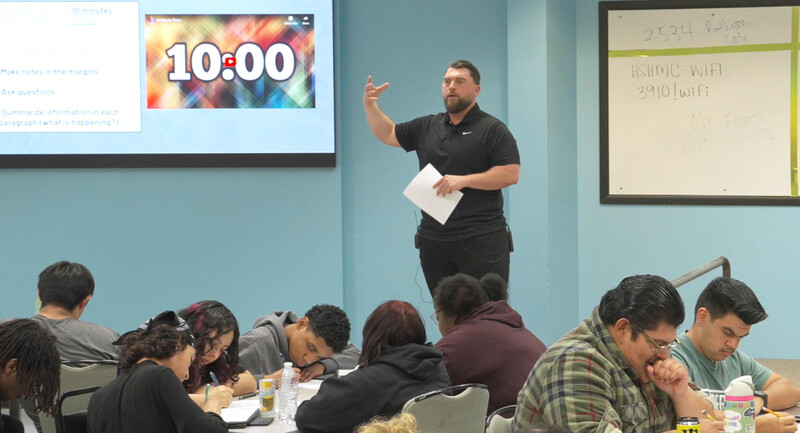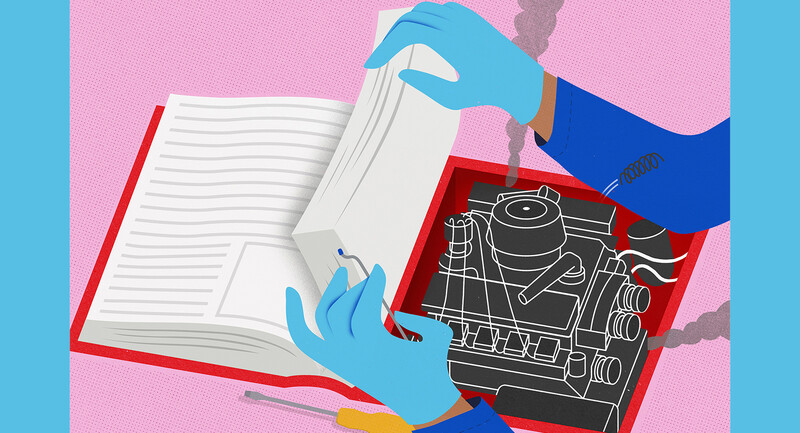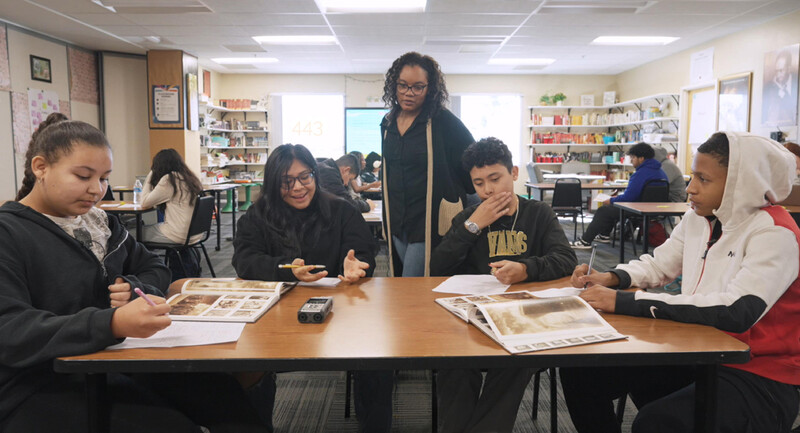Reluctant learners weigh heavily on the educators' minds. In STEM subjects, the same students who hesitate to engage for a range of reasons—such as low confidence with the material, fear of failure, or lack of connection to the content—are often the same students who are underrepresented in STEM careers. Engaging these students in exploring STEM content and skills is essential for their college and career readiness. How can teachers create authentic, nonthreatening activities that increase curiosity and willingness to participate in STEM learning?
It's in the Bag
Portable STEM maker spaces, or maker bags, are one cross-curricular, low-cost way to encourage participation in both STEM content and skills. Students will use the contents of these bags to create solutions to teacher- or student-designed challenges. Each maker bag consists of
A gallon-size zip-top bag (preferable the kind with the slider to seal it shut).
Challenge instructions that include the relevant learning.
A list describing the materials (in text or pictures) that students will use to complete the challenge.
The supplies or materials that students will use in the challenge.
To keep costs down, maker bag supplies need to be inexpensive, plentiful, and easily replaceable. For example: plastic spoons, plain and multicolored popsicle sticks, craft puff balls, wooden clothes pins, paper clips, straws, and yarn are all good options for maker bag materials.
Low Stakes, High Interest
Motivation research from Edward Deci and Richard Ryan suggests that noncompetitive, informational opportunities produce more effective learning environments than controlling and restrictive procedures. In other words, the less threatening the environment is, the more likely it is that all students will participate. When maker bag materials are easily replaceable, students are less concerned about losing or breaking any of the components and can focus on the learning task. By storing maker bag materials in a central place, teachers can easily ask students to replenish the bags as needed throughout or at the end of a challenge. For younger children, bag materials can be listed as pictures. These processes encourage students to take responsibility for bag upkeep without making the management of materials burdensome. What teachers include in the bag will depend on the challenge itself. Supplies should always include a wide variety of materials and more than is needed to complete a task. To hold students' interests, the material needs to present a challenge but also offer attainable results that are open-ended in nature. Maker bag challenges can be used to practice, review, extend, or remediate current content, or to preview and generate excitement for an upcoming unit. For example, younger students might be challenged to take the varied contents of their bag—different-colored rubber bands, ice-pop sticks, or pipe cleaners, for example—and group the objects by attributes that the students determine. Alternately, students might create as many patterns as possible using the objects in the bag. At some point in every challenge, students should be required to reflect on the design choices they made and why they made them.
The internet offers almost endless STEM challenges for educators and students to adapt into portable STEM bag challenges. For example:
One caveat to internet-sourced challenges – Often these sites are specific about the amount of materials in each bag and how students should use them. I suggest using these sites to generate ideas, but then providing students ample materials and autonomy to determine how they are going to complete the challenge.
Challenges can be done in class or at home, and students can even engage their family members in the challenge. Students might take a photo or draw a picture of challenges created at home so that the results can be easily shared with the class. When students share their outcomes with the class, it's important for the teacher to facilitate the discussion not only about results, but also about the ideas, strategies, choices, and thought processes that went into achieving them.
Student-Driven Solutions
By drawing out the creativity and innovation in each child, maker bag challenges help all students, but especially reluctant learners, develop a sense of self-efficacy and curiosity to persist. As students work to complete challenges, their solutions and designs will vary and add nuance to what challenge designers may have originally envisioned. That's OK; it actually makes the design process exciting and personal. These student-driven solutions connect STEM learning and content to each child's identity and strengths.
Maker bag activities can also be a way to connect with STEM practitioners and industries in your community. Teachers can collaborate with local businesses and experts to obtain challenge ideas and materials, giving students authentic opportunities to connect and solve problems with the community. For example, one middle school partnered with a local sorting center on a challenge to design a device that could sort different sized items using the scrap materials the center provided. Students presented their ideas to the business and through the collaboration, learned more about the STEM opportunities within their community.
Partnering with local businesses and community resources connects learning with the world outside the classroom, and it also potentially exposes students to a variety of STEM practitioners and careers. When teachers engage with local experts as STEM partners who can help focus student learning on real-life STEM applications, students benefit from seeing citizens like them, where they are from, leading the way in those fields. By engaging all students in independent and open-ended challenges that are both content- and community-based, reluctant learners develop the confidence, curiosity, and agency to thrive in STEM.
Sample Maker Bag Challenges
Materials: It's up to you as the instructor. This bag includes a piece of sidewalk chalk, two regular-sized wooden clothes pins, two medium binder clips, one small binder clip, 10 colored ice-pop sticks, and eight stretchy potholder bands (some of which match the colors of the sticks).
Students are asked to make a pattern with the materials. They can make the pattern by material, color, use, and so on.
Students are challenged to sort the materials in at least two different ways based on attributes. They need to explain how and why they chose to separate them. It could be by flexible/nonflexible material, by color, by use, and so on.
This middle school challenge can work across disciplines based on the story you use as a hook to introduce it. In social studies, I tell a story about indigenous people leaving their homes. In science, I tell a story about future life on Mars and needing to run from a dangerous situation.
Students must create a mode of transportation that moves a figurine of a person three meters without being pushed or pulled. Secondary challenge: Write a step-by-step flow chart showing how you built it. Keep all your trials and errors documented.
Materials: half sheet of paper or tag board, three old CDs, six ice-pop sticks, tape, three one-inch metal washers, two straws or wooden dowels, one balloon, six rubber bands or silicone bands used for bracelets, six mini binder clips, and one small figurine to ride the device (e.g., a LEGO person, a toy soldier).
This challenge connects to South Carolina's 3rd grade math standards for solving real-world problems involving measuring perimeters and sides of various shapes.
Create a shape with the materials in the bag. Find the perimeter of your object. Illustrate it and record your measurements. Next, create a new shape with the same perimeter as your first object. Draw each object and label the measurements or take a picture and label the measurements. What is the area of each object?
Materials: pipe cleaners, small binder clips, full-size clothes pins, straws, rubber bands, ice-pop sticks, tape measure (not pictured).







